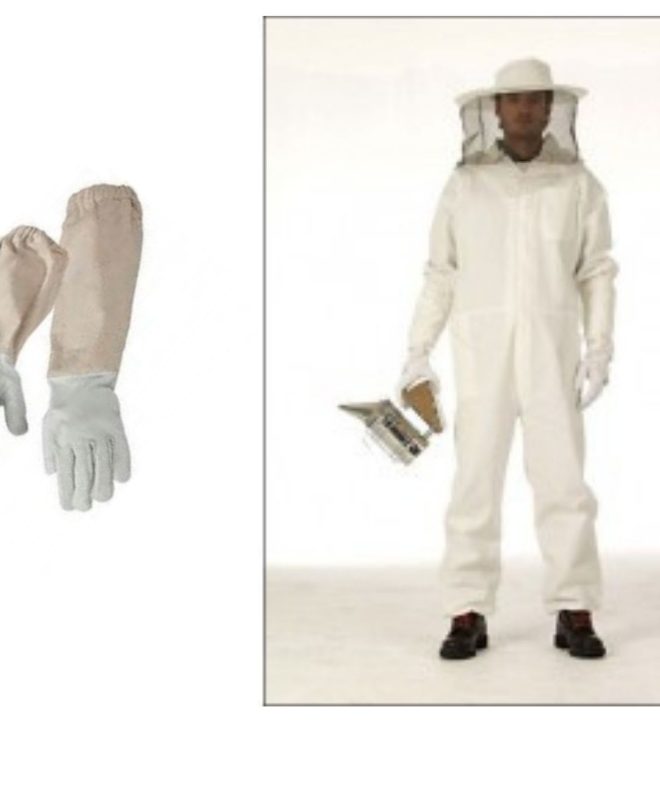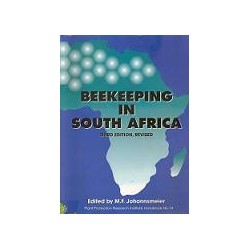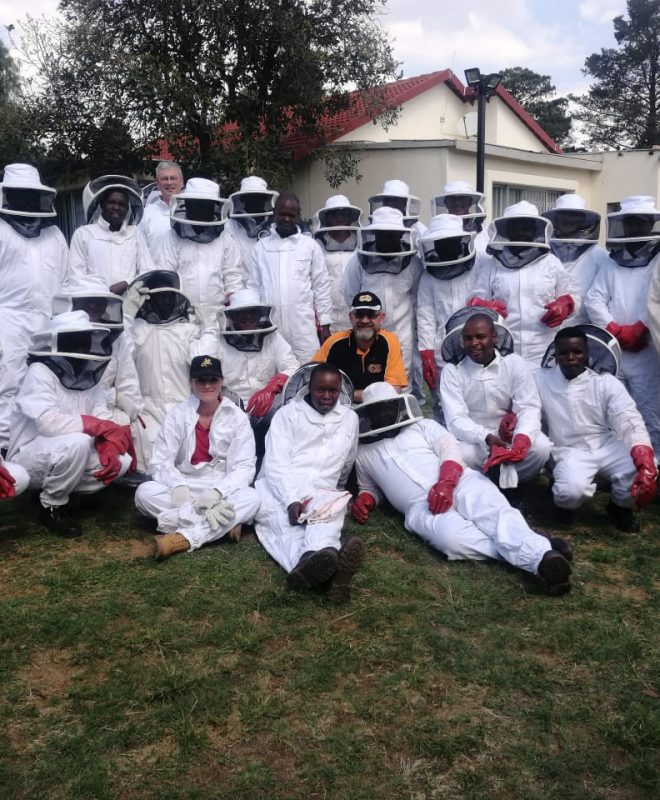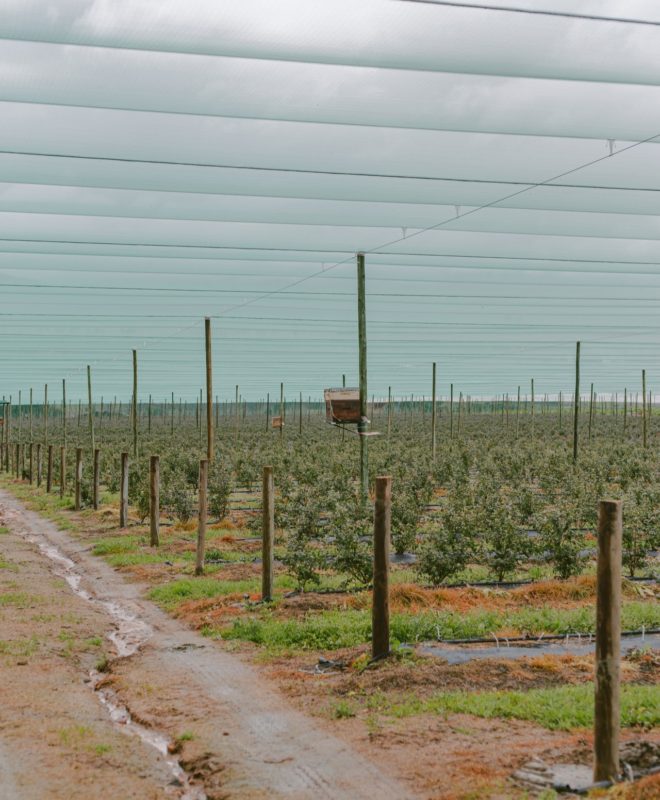Bee courses for beginner beekeepers.
Learn to start beekeeping with a full day bee course in Midrand.
Blue Book, Beekeeping in South Africa
R500,00The bee book affectionately nicknamed, the Blue Book, is the book on beekeeping comprising over 280 pages of fantastic photos, plant and tree Nectar tables and much more about apiary management, honey and pests.
Easy Buzzing Bee Course – Beginner – 7 June 2025
R1350,00Our flagship Easy Buzzing Bee Course for Beeginner Beekeepers with 17 years experience helping newbee beekeepers kick start their beekeeping adventure!
Easy Buzzing Bee Course – Beginner -7 June 2025
R1350,00Our flagship Easy Buzzing Bee Course for Beeginner Beekeepers helping newbee beekeepers kick start their beekeeping adventure!
Pollination Services in the Western Cape
R1534,18Barben Bees offer pollination services to farmers in the Western Cape. From:
Almonds
Apples
Avocado
Blackberries
Blueberries
Brassica seed
Carrot seed
Cherries
Leek seed
Onion seed
Pears
Plums
Raspberries
Strawberries
Other
Contact us to arrange a meeting to discuss the pollination of your crop.
Following the guidelines issued by the Western Cape Beekeeping Industry Association (WCBA) We provide strong colonies to ensure that when it comes to offering a professional pollination service we hit the mark.
The number of hives required differs from crop to crop.
We suggest you, the grower, meet with us to discuss your requirements.
Our boxes are langstroth, with between 10 – 11 frames in the brood, For us a pollination unit always includes the super, which we place on top of the brood box. We do this, not for honey production but, to provide additional ventilation space for the bees to not become stressed during transit.
See Below the guidelines outlined by the WCBA
https://wcba.co.za/wp-content/uploads/2021/06/2021-WCBA-pollination-standard-English.pdf
Pollination Standard (2021)
1. THE POLLINATION BEE-HIVE
a. A standard Langstroth-type beehive with no fewer than 10 individually removable, deep frames,
b. All frames are to be reinforced to prevent collapse during transport.
c. A honey super is allowed, subject to conditions specified below. The super must have no fewer than 9
individually removable, superframes.
d. The DALRRD registration number to be clearly visible on all hives.
2. LEAKPROOFNESS
a. The construction and condition of the hive must be such that it can be sealed easily & quickly,
b. Colonies must be sealed during delivery, transport or collection such that few to no bees escape.
3. VENTILATION
a. The hive configuration and closing mechanism must be such that it facilitates sufficient ventilation to
the bees and brood at all times and prevents overheating or suffocation during transport.
b. The colony should forage normally within 24 hours after delivery during normal, dry and mild weather
(above 17 degrees C).
c. There are few to no dead or dying bees seen in front of the hives.
4. QUEEN STATUS
a. The hive should be queenright.
b. The queen should be actively laying as reflected by a normal brood pattern, with a balance
between eggs, larvae, and sealed brood.
5. DISEASE STATUS
The colony should be healthy and properly managed such that:
a. No clinical symptoms of American Foulbrood are present
b. A maximum of 50 cells with European Foulbrood are present.
c. A maximum of 50 cells with chalkbrood are present.
d. A maximum of 50 small hive beetles are present in the colony.
e. Varroa mite numbers in the colony do not exceed more than 5 mites per 100 adult bees.
6. COLONY STRENGTH
a. Average (90%) strength of bee colonies in a consignment should measure at least:
i. A minimum of 4 brood frames of brood (each brood frame must have at least 75% of
the frame covered in brood).
ii. Or the equivalent amount of brood that would cover more than 4 brood frames.
iii. A minimum of 8 brood frames covered by bees in a calmed-down condition.
iv. No more than 3 deep frames of stored honey.
v. No more than 2 deep frames of stored pollen.
vi. No more than 2 frames of honey in a super, should a super be present.
b. No Pollination unit in any consignment should measure less than:
i. 3 brood frames of brood (each brood frame must have at least 75% of the frame
covered in brood),
ii. Or the equivalent amount of brood that would cover more than 3 brood frames,
iii. And 6 brood frames covered by bees in a calmed-down condition.
iv. No more than 3 deep frames of stored honey.
v. No more than 2 deep frames of stored pollen.
vi. No more than 2 frames of honey in a super, should a super be present.
Contact us today for more information





